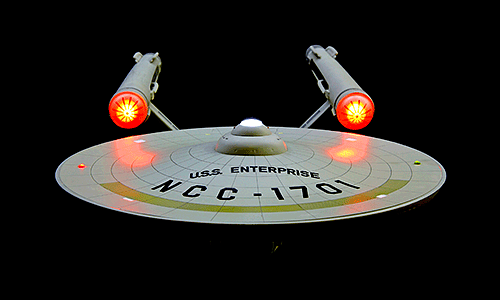Go Boldly into the Future October 2016
Want more free featured content?
Subscribe to Insights in Brief

The year 2016 marks the 50-year anniversary of Star Trek (a television series by creator Gene Roddenberry) set in the 2260s, the age of intergalactic space travel. Each week, Star Trek's starship Enterprise had a five-year mission: "to boldly go where no man has gone before." The series captured the imaginations of many people in the Boomer generation. Today, Trekkies note how prophetic good Sci-Fi can be. More important, the series contains a valuable lesson for how businesses can think about going boldly into their future more reliably.
Mainstay characters on the bridge of the USS Starship Enterprise included women in leadership positions and groundbreaking diversity. The original crew included a variety of characters who were "foreign" and therefore feared by many Americans at the time: Chekov (Russian), Sulu (Asian), Uhura (African American), and Spock (Vulcan). When the series began, Star Trek technology devices were inconceivable to most viewers. Devices such as "communicators," for example, were the precursors to clamshell cell phones, which appeared in real life several decades later. The quest for Star-Trek-like technology continues as scientists and medical researchers work on noninvasive diagnostic devices such as the multifunction handheld tricorder that Dr. McCoy (Bones) used. Some quantum-physics scientists are working on transporting physical material and the possibility of warp speed.
Each episode presented the crew of the Enterprise with a new world and new challenges. Contributing to the show's success was the constancy of the personalities of the crew—the fearless and irreverent Captain James T. Kirk, the cool-headed savant Spock, the sardonic and emotional Bones, and the problem-solving chief engineer Scotty, for example. The situation changed each week, but every character reacted in a manner consistent with his or her personality. So it is in the real world: Regardless of the situation, people respond in character.
For businesses, forecasting the future is always fraught with uncertainty. However, knowing how consumer "characters" will most likely react provides a measure of stability to the process of peering into the future. VALS™ provides reliable consumer understanding so that your business is better prepared for what might happen. For example, how will consumers react to your product and service offers in a world (a scenario) shaped by good economic times or bad economic times? Which consumers will look forward to, and be early adopters of, the next-generation Star-Trek-like technology such as augmented and virtual reality?
VALS is a proven method to understand that, regardless of the scenario, some consumers are, and will always be, future oriented; other consumers will always lag far behind. Some consumers will always look for personal gain; other consumers are concerned about social justice. Some consumers will consistently be traditional in their approach and reluctant to take risk as a result. In contrast, some consumers will always take a gamble on the new and unproved. VALS, in combination with scenario planning, identifies how individual consumer groups will most likely respond across time and place.
To use VALS to go boldly into the future, contact us.